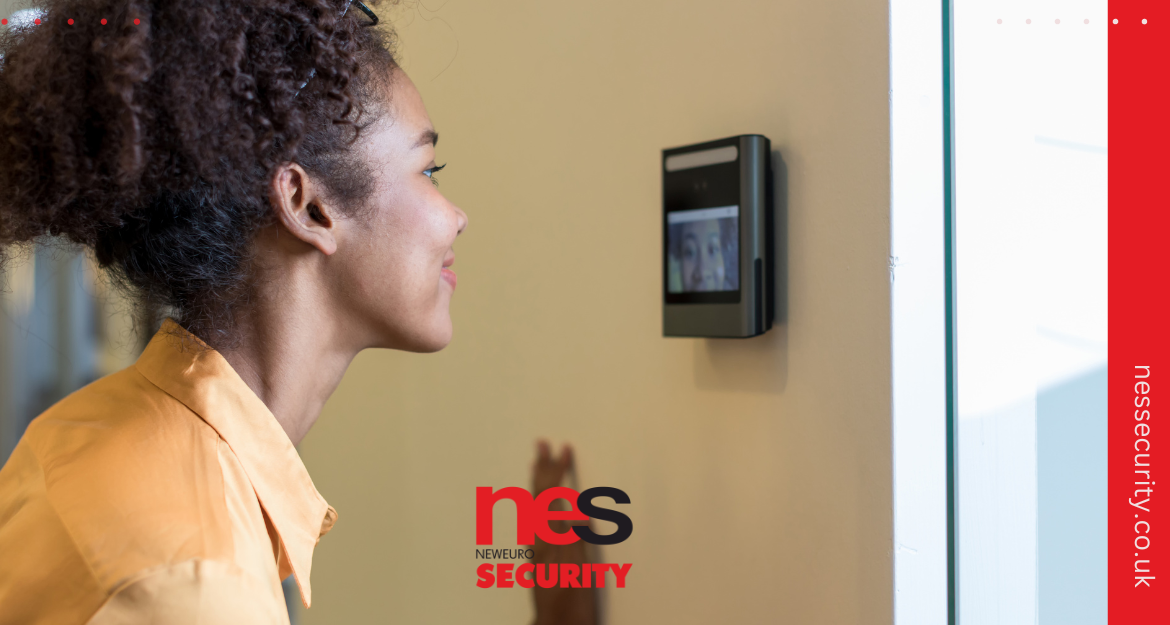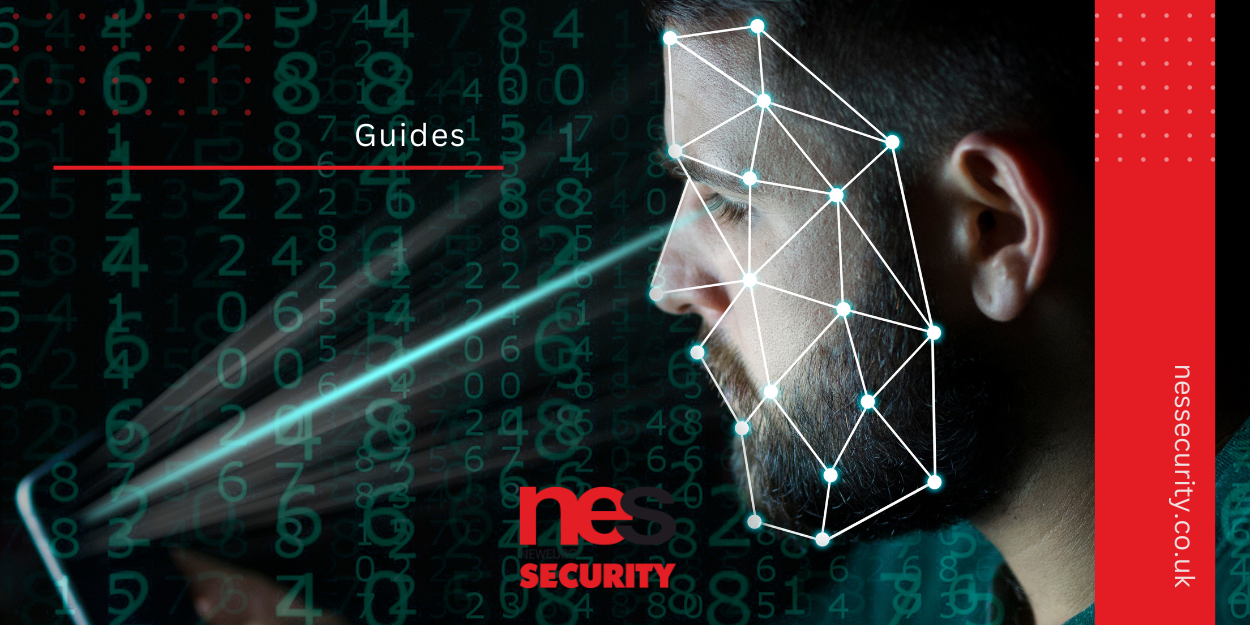In the realm of access control, two prominent options stand out: keycards and biometric systems. Choosing the right solution is vital to ensuring the security and convenience of your premises. Both options offer unique benefits and considerations, making the decision-making process crucial. Let’s delve into the world of keycard and biometric access control systems to help you determine which one is the perfect fit for your needs. And when it comes to implementation and expertise, Nes Security is here to guide you every step of the way.
Opening the Door to Access Control Choices
Managing access to your premises efficiently and securely is a priority for any organisation. Keycard and biometric access control systems offer reliable methods to regulate entry, prevent unauthorised access, and protect sensitive areas. To make an informed decision, it is essential to understand the intricacies of each system and evaluate how they align with your specific requirements.
Understanding Key Card Access Control Systems
Keycard access control systems utilize physical cards or key fobs containing electronic information that grants access to authorised individuals. These cards are presented to a reader, which then verifies the credentials and grants or denies access accordingly. Keycard systems are popular due to their ease of use, simplicity, and cost-effectiveness. They offer a convenient solution for managing access without the need for complex infrastructure or extensive training.
Unveiling the Power of Biometric Access Control Systems
Biometric access control systems, on the other hand, leverage unique biological characteristics such as fingerprints, facial features, or iris patterns to grant access. By capturing and comparing these distinctive traits, biometric systems provide a high level of security and accuracy. They eliminate the need for physical cards or codes, making impersonation or theft of access credentials virtually impossible. Biometric systems offer enhanced security measures, especially in environments where strict access control is crucial.

Convenience and Simplicity: Exploring Keycard Access Control
Keycard systems provide a user-friendly and straightforward approach to access control. Users can easily present their keycards to the reader, granting or denying access in a matter of seconds. These systems are ideal for organisations requiring a hassle-free solution that doesn’t require extensive training or complex implementation processes. Keycards are easily replaceable if lost or stolen, minimising the security risks and costs associated with reissuing credentials.
Enhanced Security and Accuracy: Embracing Biometric Access Control
Biometric access control systems offer unparalleled security and accuracy. By relying on unique biological traits, these systems provide a highly secure means of access control. Biometric data is nearly impossible to duplicate or forge, minimising the risk of unauthorised entry. Moreover, biometric systems eliminate the need for physical credentials, reducing the chances of theft or misuse. These systems are especially beneficial for organisations that prioritise stringent security measures and safeguarding critical areas.
Keycard Access Control: Pros, Cons, and Considerations
Keycard access control systems come with their own set of advantages and considerations. The pros include ease of use, cost-effectiveness, and the ability to integrate with existing infrastructure. However, keycards can be lost, stolen, or shared, potentially compromising security. Additionally, keycard systems may require periodic maintenance and the issuance of replacement cards.
Biometric Access Control: Advantages, Limitations, and Factors to Consider
Biometric access control systems offer several advantages, such as enhanced security, accurate identification, and convenience. They provide a more reliable means of access control, as biometric traits are unique to each individual. However, biometric systems can be more expensive to implement and may require specialised hardware and software. Some individuals may have concerns regarding the storage and privacy of their biometric data.
Integration and Scalability: Evaluating Key Card and Biometric Systems
Consider the integration capabilities and scalability of both keycard and biometric access control systems. Keycard systems are generally easier to integrate with existing infrastructure, making them suitable for organisations with established security systems. On the other hand, biometric systems may require additional hardware and software integration. Scalability is also a crucial factor to accommodate future growth and changing access control needs.
Cost Analysis: Comparing the Expenses of Keycard and Biometric Solutions
Cost is an important consideration when choosing an access control system. Keycard systems are often more affordable upfront, with lower installation and hardware costs. Biometric systems, while initially more expensive, may provide long-term cost savings by eliminating the need for card replacements and reducing security risks. Consider your budget and weigh the costs against the desired level of security and convenience.
Making an Informed Decision for Your Access Control System
To make the right choice between keycard and biometric access control, evaluate your specific needs, security requirements, budget, and integration capabilities. Assess the level of convenience, security, and scalability that aligns with your organisation’s goals. A well-informed decision will ensure optimal access control management and peace of mind.

Partnering with Experts: Nes Security‘s Expertise in Key Card and Biometric Access Control
When it comes to choosing and implementing the right access control solution, partnering with experts like Nes Security can make a significant difference. With their extensive knowledge and expertise in both keycard and biometric access control systems, Nes Security can guide you through the decision-making process.
By collaborating with Nes Security, you can benefit from their in-depth understanding of the strengths and limitations of each system. They will assess your unique requirements, considering factors such as security needs, budget, integration capabilities, and scalability. Based on their analysis, they will recommend the most suitable access control solution for your small business.
Nes Security’s expertise extends beyond just recommendations. They will handle the installation process seamlessly, ensuring that your chosen system is implemented correctly and operates optimally. With their professional assistance, you can have peace of mind knowing that your access control solution is tailored to your specific needs and meets the highest standards of security.
Nes Security provides ongoing support and maintenance services. They are dedicated to ensuring the reliable operation of your access control system. Whether you need troubleshooting assistance or regular maintenance checks, Nes Security is there to support you every step of the way.
When it comes to selecting and implementing the right access control solution for your small business, partnering with experts like Nes Security is invaluable. Their expertise in keycard and biometric access control, coupled with their commitment to customer satisfaction, ensures that you receive a secure and tailored solution that meets your unique needs. Trust Nes Security to guide you through the process and provide the necessary support to safeguard your premises and protect your valuable assets.


